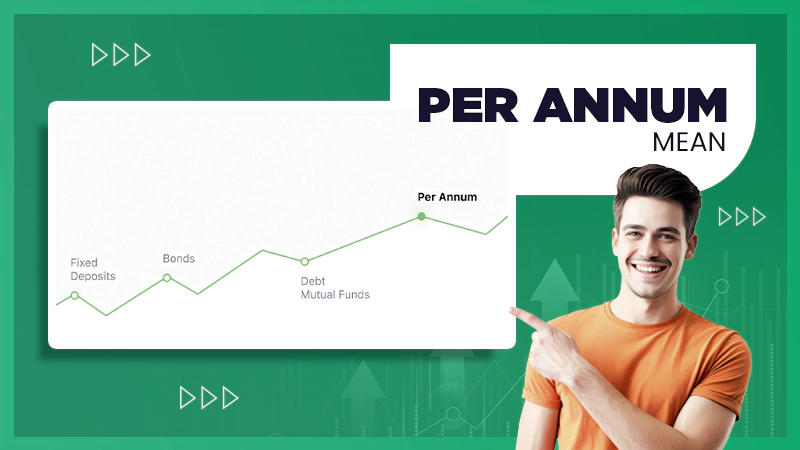Small business owners often accumulate precious metals as part of their wealth preservation strategy. Gold coins, silver bars, and other precious metals can serve as financial reserves during business transitions, retirement planning, or unexpected liquidity needs. Knowing how to sell these assets properly protects your investment and maximizes returns.
This guide walks through what business owners need to know about liquidating precious metals holdings.
When Business Owners Need to Liquidate Precious Metals
Business cycles create different scenarios where converting metals to cash makes sense. Understanding these situations helps you plan ahead and avoid rushed decisions that leave money on the table.
US Gold and Coin and other precious metals buyers report that business owners typically sell for specific reasons rather than opportunistic timing. Recognizing your own trigger points helps you prepare documentation, research buyers, and understand current market values before you need immediate cash.
Retirement represents the most common reason business owners sell precious metals. After decades of accumulation, converting physical assets to liquid funds becomes necessary. Some retirees sell their entire holdings at once. Others take a phased approach, liquidating portions annually to fund living expenses while maintaining some inflation protection.
Business expansion opportunities also drive sales. When equipment upgrades, real estate purchases, or acquisition opportunities arise, precious metals provide accessible capital without taking on debt. The key is planning far enough ahead to get competitive bids from multiple buyers.
Economic uncertainty cuts both ways. While some owners buy metals during downturns, others sell holdings when prices spike during crises. Taking profits after strong price runs often makes financial sense, especially if metals have grown to represent an outsized portion of your portfolio.
Understanding What Affects Your Sale Price
The price you receive for precious metals depends on multiple factors beyond just the spot price you see quoted online.
Spot Price vs Dealer Buyback Price
Spot price represents the current market price for immediate delivery of raw precious metals. Exchanges like COMEX set these prices through continuous trading. You can check spot prices through financial websites, but remember that dealers never pay full spot price when buying from individuals.
Dealers typically pay 2-10% below spot price depending on the product type and market conditions. This spread covers their operating costs, refining expenses if needed, and profit margin. Bullion products like American Eagles or Canadian Maple Leafs command prices closer to spot because they’re easy to verify and resell. Generic rounds or bars might fetch lower percentages because dealers need to verify authenticity more carefully.
The Federal Trade Commission warns consumers to compare multiple offers before selling. A dealer paying 95% of spot might seem low until you discover competitors only offer 90%. Getting at least three quotes protects you from leaving money on the table.
Product Type and Condition
What you’re selling matters as much as when you sell it. Government-issued coins typically bring higher buyback percentages than generic products. American Eagles, for instance, carry recognizable designs and guaranteed purity from the U.S. Mint. Dealers can move these quickly, so they pay more.
Numismatic or collectible coins follow different rules. Their value depends on rarity, condition, and collector demand rather than just metal content. A rare Morgan silver dollar in mint condition might sell for ten times its silver value. That same coin with scratches and wear might only bring melt value. Professional grading from PCGS or NGC adds credibility and often increases prices, though grading costs money upfront.
Damaged or questionable items present challenges. Bent coins, scratched bars, or products missing certificates of authenticity receive lower offers. Dealers factor in additional verification costs or refining expenses. Sometimes selling for melt value makes more sense than trying to find a buyer willing to pay more.
Quantity and Transaction Size
Selling larger quantities often means better pricing. Dealers prefer buying $10,000 worth of gold over $500 because the transaction effort stays similar while the profit increases. Some buyers offer tiered pricing where rates improve as your sale amount rises.
That said, don’t let quantity pressure you into selling everything at once if you don’t need to. Sometimes splitting sales across multiple transactions or buyers yields better overall returns, especially if market conditions are improving.
Preparing Your Metals for Sale
Proper preparation before approaching buyers strengthens your negotiating position and speeds up transactions.
Documentation Gathering
Collect all paperwork related to your precious metals. This includes purchase receipts, certificates of authenticity, grading reports, and any correspondence with previous dealers. Documentation proves ownership and establishes provenance, particularly for rare or collectible items.
Original packaging matters more than you might think. Coins sold in their original mint tubes or boxes often bring premiums over loose coins. Graded coins should stay in their sealed holders. Breaking these seals destroys the grade and reduces value.
Take inventory before contacting buyers. List each item with its type, weight, purity, and condition. Having exact counts prevents confusion during negotiations and helps you track what you’re offering to different dealers.
Current Market Research
Check spot prices for gold, silver, platinum, and palladium before soliciting offers. Websites like Kitco and the London Bullion Market Association publish real-time prices. Understanding current rates helps you evaluate whether dealer offers are reasonable.
Research typical buyback spreads for your specific products. Online forums and precious metals communities discuss what others have received recently. While these aren’t guarantees, they provide benchmarks for comparison.
Watch for market timing if you have flexibility. Precious metals prices fluctuate daily based on economic news, currency movements, and geopolitical events. Selling during price spikes rather than dips can mean thousands of dollars difference on large holdings. That said, don’t try to time the absolute peak. Waiting too long for perfect conditions often backfires.
Authentication Verification
Counterfeit precious metals have become sophisticated enough to fool casual inspection. Before approaching buyers, consider having questionable items authenticated independently. This is especially important for items lacking original documentation or purchased from unknown sources.
Testing services and coin shops can verify authenticity using various methods. Density testing, electrical conductivity measurements, and X-ray fluorescence analysis all reveal metal composition. Some services charge per item, while others have minimum fees regardless of quantity.
If you discover counterfeits in your collection, disclose this to buyers upfront. Selling fake items as genuine creates legal liability. Reputable dealers will decline to purchase counterfeits, but at least you’ll know what you actually own before negotiating.
Choosing Where to Sell Your Precious Metals
Business owners have multiple options for liquidating precious metals. Each channel offers different advantages and drawbacks.
Local Coin and Bullion Dealers
Local dealers provide face-to-face transactions and immediate payment. You can inspect their operation, ask questions, and sometimes negotiate better terms than online buyers offer. Established dealers with physical storefronts have reputations to protect, which adds accountability.
Visit multiple local dealers before committing. Explain what you’re selling and ask for preliminary offers. Most dealers will examine items and provide quotes on the spot. Compare these offers against online prices to ensure you’re getting fair value.
Ask about payment methods. Some dealers pay cash immediately for smaller transactions. Larger sales might involve checks or bank transfers that take days to clear. Understand the timeline so you’re not counting on money that won’t arrive immediately.
Check credentials before selling. Look for membership in professional organizations like the Professional Numismatists Guild or American Numismatic Association. Better Business Bureau ratings and online reviews reveal how dealers treat sellers. Long-established businesses with clean records deserve more trust than newly opened shops.
Online Precious Metals Buyers
Online buyers serve sellers who lack quality local options or want to compare offers easily. You ship your metals to the buyer, they examine and test items, then send payment. Legitimate online buyers provide insured shipping labels and return your items free if you decline their offer.
The process typically works like this: request a quote online, print a shipping label, mail your items, wait for evaluation, accept or reject the offer. Turnaround times vary from a few days to two weeks depending on the buyer’s workload.
Research online buyers carefully. Some have excellent reputations and fair pricing. Others use low-ball tactics, hoping sellers won’t reject offers after shipping items. Read multiple reviews from independent sources before choosing a buyer. Check how they handle disputes and whether they communicate clearly throughout the process.
Insure shipments when using online buyers. While most provide pre-paid insured labels, verify coverage amounts match your metals’ value. Take photos of items before shipping and document package condition. This protects you if items are lost or damaged in transit.
Auction Houses for Rare Coins
Numismatic rarities often bring higher prices through auction than direct dealer sales. Auction houses attract serious collectors willing to pay premiums for scarce items. If you own rare coins, proof sets, or historically significant pieces, auction might maximize returns.
Auction houses charge seller fees, typically 10-20% of the final price. They also take time. Consigning items, cataloging, marketing, and holding the auction can take months. This isn’t the right choice if you need quick cash.
Get items professionally graded before auction. PCGS and NGC grading dramatically increases collector confidence and usually results in higher bids. The grading cost gets recouped through better prices on truly rare pieces.
Direct Sales to Private Buyers
Selling directly to other collectors or investors eliminates dealer middlemen. You keep the entire sale price rather than accepting dealer buyback rates. Classified ads, online marketplaces, and precious metals forums connect sellers with buyers.
This approach requires more effort and carries more risk. You handle all negotiations, arrange meetings, and accept payment directly. Verifying buyer legitimacy and payment authenticity becomes your responsibility. Scams exist, from counterfeit cashier’s checks to meetup robberies.
If you choose private sales, follow safety protocols. Meet in bank lobbies during business hours. Verify checks with the issuing bank before releasing merchandise. Never share personal details like your home address. For large transactions, consider using escrow services that protect both parties.
Negotiating Better Prices When Selling
Business owners accustomed to negotiations can apply similar skills when selling precious metals.
Getting Multiple Competing Offers
Never accept the first offer without comparison shopping. Contact at least three different buyers with identical lists of what you’re selling. Request written quotes that break down the price per item or per ounce.
Some dealers initially lowball, expecting negotiation. Others offer their best price upfront. You won’t know which approach a dealer takes without comparing multiple offers. The spread between highest and lowest offers can reach 10-15% on the same items.
Timing these requests matters. Contact all buyers within the same day if possible since spot prices change. This ensures you’re comparing apples to apples rather than offers based on different market conditions.
Understanding Dealer Perspective
Dealers run businesses with overhead costs. Rent, insurance, employee salaries, and inventory carrying costs all factor into their pricing. They need profit margins to survive. Recognizing this helps you set realistic expectations.
Ask dealers about their resale plans for your items. If they’re buying for immediate resale to collectors, they might pay more than if they’re simply melting items for scrap. Understanding their intentions reveals room for negotiation.
Build rapport during transactions. Dealers prefer working with professional, knowledgeable sellers who have realistic expectations. Being difficult or making unreasonable demands typically results in worse offers, not better ones.
Leverage Timing and Urgency
Urgency cuts both ways in negotiations. If you desperately need cash immediately, dealers will sense this and offer less. When possible, maintain flexibility so you can walk away from poor offers.
Conversely, some dealers need inventory. If they’re running low on popular products like American Eagles, they might pay premiums to restock. Asking about their current needs sometimes reveals opportunities for better pricing.
End-of-month or quarter timing sometimes helps. Dealers facing sales targets or trying to report strong periods might stretch on pricing. This isn’t guaranteed, but it costs nothing to ask if timing affects their offer.
Tax Implications When Selling Precious Metals
The IRS treats precious metals sales differently than stock sales. Understanding these rules prevents surprises at tax time.
Capital Gains on Collectibles
Precious metals fall under IRS collectibles classification. Long-term capital gains (items held over one year) face a maximum 28% tax rate. This is higher than the 15% or 20% rate on stocks and bonds.
Short-term gains from items held less than one year get taxed as ordinary income at your regular rate. For high-earning business owners, this could mean paying 37% federal tax plus state taxes on profits.
Calculate your cost basis carefully. This is what you originally paid for the items, including any dealer premiums or fees. Your gain equals the sale price minus your cost basis. Keep all purchase records to document this basis to the IRS.
Form 1099-B Reporting
Dealers must report certain precious metals sales to the IRS using Form 1099-B. Reporting thresholds vary by product type. Sales of 25 or more ounces of gold bars, 1,000 ounces of silver bars, or specified quantities of certain coins trigger automatic reporting.
You’ll receive a copy of any 1099-B issued. Report this sale on Schedule D when filing your tax return. Even if the dealer doesn’t issue a 1099-B, you’re still legally required to report capital gains and pay applicable taxes.
Some business owners try avoiding reporting by keeping sales below thresholds. While legal, this approach requires multiple transactions with different timing. Consult a tax professional before implementing strategies to minimize reporting.
State and Local Taxes
Some states charge sales tax on precious metals purchases but not sales. Others exempt precious metals transactions entirely. Research your state’s rules to understand obligations.
Local taxes rarely apply to precious metals sales, but check regulations in your area. Municipal or county taxes on investment sales exist in some jurisdictions.
Protecting Yourself From Scams When Selling
The precious metals market attracts scammers targeting sellers unfamiliar with proper procedures.
Recognizing Common Scam Tactics
“Bait and switch” ranks as the most common scam. Dealers quote attractive prices to get you in the door, then claim items aren’t what you described or have issues that justify lower offers. Once sellers invest time driving to locations or shipping items, many accept reduced offers rather than start over.
Combat this by getting quotes in writing after describing items accurately. If the dealer dramatically changes their offer upon inspection, walk away. Legitimate dealers stand behind initial quotes when items match descriptions.
Check fraud targets sellers accepting payment via check or money order. Fake cashier’s checks look authentic but bounce days later after you’ve released merchandise. Verify all checks directly with issuing banks before completing transactions.
Fake online buyers create legitimate-looking websites then disappear with shipped items. They might send fake payment confirmations or make excuses about delayed transfers. Research any online buyer thoroughly through independent reviews before shipping anything.
Meeting Safety Protocols
In-person transactions require security awareness. Arrange meetings in public locations with security cameras. Bank lobbies work well since they have surveillance and staff present. Avoid meeting at your home or isolated locations.
Bring someone with you when selling large quantities. A second person deters theft attempts and provides witness testimony if disputes arise. Tell someone else where you’re going and when you expect to return.
Count and verify payment before releasing items. Check bills for counterfeits using detection pens. Verify electronic transfers show in your account before handing over merchandise. Don’t let buyers rush this verification process.
Documentation for Protection
Document everything about your sale. Take photos of items before selling. Record serial numbers from graded coins. Keep copies of all correspondence with buyers, including emails, text messages, and written offers.
Get receipts showing what you sold, the price received, and payment method. Reputable dealers provide these automatically. If a buyer refuses documentation, consider this a red flag and find someone else.
This documentation serves multiple purposes. It proves cost basis for taxes, provides evidence if disputes arise, and creates accountability for both parties.
After the Sale: Managing Proceeds
Converting precious metals to cash creates opportunities and responsibilities.
Immediate Reinvestment Considerations
Many business owners sell metals specifically to fund other investments. Real estate down payments, equipment purchases, or stock market opportunities often motivate sales. Plan these reinvestments before selling so cash doesn’t sit idle losing value to inflation.
Consider tax timing when reinvesting. Spreading capital gains across tax years sometimes reduces overall liability. Selling a portion late in one year and the rest early the next year splits gains between two tax returns.
Some owners shift from physical metals to precious metals ETFs or mining stocks after selling. This maintains metals exposure while improving liquidity and eliminating storage concerns. Each approach has different tax treatments and risk profiles.
Setting Aside Tax Reserves
Reserve money for taxes immediately after selling. Calculate your expected capital gains tax liability and move that amount into a separate account. Don’t spend money that belongs to the IRS.
Work with your accountant to determine estimated tax obligations. You might need to make quarterly estimated payments if the sale creates substantial gains. Missing these payments triggers penalties and interest charges.
State taxes vary widely. Some states have no capital gains tax. Others tax investment income at regular rates. Factor in both federal and state obligations when reserving funds.
Updating Financial Records
Update your business financial statements to reflect the sale. If metals were listed as business assets, their removal affects your balance sheet. Work with your bookkeeper to ensure proper accounting.
Inform your insurance company about the sale if you carried specific coverage for precious metals. Eliminating unnecessary insurance reduces costs. Keep proof of sale in case the insurer questions why coverage was dropped.
Update estate planning documents if precious metals represented a significant asset. Will provisions specifically mentioning gold or silver coins need revision. Beneficiaries should understand what assets remain in your estate.
Mistakes That Cost Business Owners Money When Selling
Learning from others’ errors protects your returns.
Accepting First Offers Without Comparison
The single biggest mistake sellers make is accepting initial offers without shopping around. Dealer margins vary significantly. What one dealer offers 85% of spot price for might bring 92% elsewhere.
This mistake costs real money. On a $50,000 precious metals sale, a 7% difference in buyback rate equals $3,500. That’s worth the few hours spent getting competitive bids.
Business owners accustomed to decisive action sometimes skip due diligence on precious metals sales. Apply the same research standards you’d use for major business purchases.
Selling During Price Dips
While timing the market perfectly is impossible, selling during obvious price crashes leaves money on the table. If gold drops 10% in a week due to temporary news, waiting a few weeks for stabilization often recovers significant value.
Monitor price trends for at least 30 days before selling unless you face genuine emergencies. This reveals whether current prices represent normal fluctuations or unusual dips worth waiting out.
Set price targets ahead of time. If gold reaches $2,000 per ounce and you’d be happy selling at that level, do it. Don’t hold out for $2,100 and risk watching it fall back to $1,850.
Failing to Verify Buyer Legitimacy
Scammers specifically target precious metals sellers because transactions involve valuable, portable items. Failing to verify buyer legitimacy costs sellers thousands annually.
Check Better Business Bureau ratings, read multiple independent reviews, and verify business licenses before committing. Legitimate dealers welcome this scrutiny. Those resisting background checks are hiding something.
Online sellers should verify the buyer’s physical address exists and matches company registrations. Search for the business name plus “scam” or “complaint” to find warning signs others have posted.
Poor Record Keeping
Inadequate documentation during sales creates problems later. You might face IRS audits requiring proof of cost basis. Insurance claims could demand evidence of what was sold. Legal disputes need transaction records.
Keep everything related to the sale for at least seven years. This includes emails, quotes, receipts, shipping records, and payment confirmations. Store digital copies in cloud services and physical copies in secure locations.
Write notes about verbal conversations immediately after they occur. Details fade quickly, but documentation created at the time carries more credibility if disputes arise years later.
Wrapping Up
Selling precious metals successfully requires preparation, market knowledge, and careful dealer selection. Business owners who invest time researching buyers, understanding current market conditions, and documenting transactions properly protect their returns and avoid costly mistakes.
The key is treating precious metals sales with the same professional approach you’d apply to any major business transaction. Get multiple quotes, verify buyer legitimacy, understand tax implications, and maintain detailed records throughout the process.
- When Business Owners Need to Liquidate Precious Metals
- Understanding What Affects Your Sale Price
- Preparing Your Metals for Sale
- Choosing Where to Sell Your Precious Metals
- Negotiating Better Prices When Selling
- Tax Implications When Selling Precious Metals
- Protecting Yourself From Scams When Selling
- After the Sale: Managing Proceeds
- Mistakes That Cost Business Owners Money When Selling
- Wrapping Up







